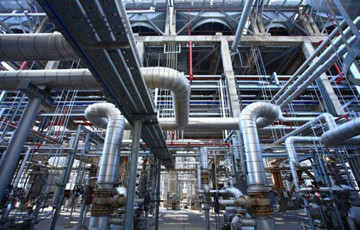
What is A Piping System?
A Piping System is an assembly of various components put together with a proper method of joints, functionally to transport fluid from its source to destination. The different components put together are defined as piping components.
A piping system is a network of pipes, fittings and valves intended to perform a specific job i.e. to carry or transfer fluids from one equipment to another. The plumbing network supplying water at your home is a common example of a piping system. Other more rigorous examples include steam piping in a power plant, milk piping in a dairy, paint piping in a paint manufacturing plant, oil piping in a refinery, so and so forth.
Components of a Piping System
The most common components of a piping system are pipes, pipe fittings and valves.
Pipes: Pipes are long cylinders used to carry or transfer fluids. The most common fluids are water, oil, steam, air, milk or finished products like paints, juices. Other uncommon examples include pulp, acids, alkalies, chemicals etc.
Pipe Fittings: Pipe fittings are used to connect lengths of pipes to construct a long piping system; commonly used fittings are flanges, elbows, tees, reducers, expansion bellows etc.
Valves: Valves are used to stop, divert or control fluid flow. Common valve types are gate valves, globe valves, butterfly valves, ball valves, control valves; the selection is based on intended function and application.
In addition, a number of devices like strainers, traps, expansion loops are necessary for keeping the fluid clean and in good condition, and to accommodate expansion/contraction due to temperature variations.
Pipe:
Pipe is a tubular product used to convey a fluid. The pipe sizes are generally identified as nominal bore (NB) or nominal pipe size (NPS). Pipes have fixed outside diameter (O/D) and variable inside diameter based on the thickness selected.
The codes used for pipe selection are
ASME B 36.10- Welded and seamless wrought steel pipes
ASME B 36.9- Stainless steel pipes
The different sizes and thickness which are available are specified in above standards.
Thickness of pipe is generally designated by schedule no. and the corresponding thickness specified.
Types of pipes:
1. Seamless:
Pipe produced by piercing a billet followed by rolling or drawing or both.
They are used for high pressure applications.
2. Welded:
a. Electric fusion welded (EFW): Pipes carrying a single or double longitudinal but weld joined wherein coalescence is produced by manual or automatic electric arc welding in the preformed tube.
b. Electric resistance welded: (ERW): Pipe carrying ongitudinal but weld joined wherein coalescence is produced by heat obtained from resistance of the pipe to flow of electric current in a circuit of which the pipe is a part and by application of pressure.
3. Forged and bored:
Pipes prepared by forging and then boring to the desired thickness.
Various methods of pipe joints:
1. Butt weld pipe joints
2. Socket weld pipe joints
3. Screwed pipe joints
4. Flanged pipe joints
5. Spigot socket pipe joints
Material for Piping Systems
Piping system may consist of a variety of materials including mild steel, stainless steel, aluminum, brass, copper, glass or plastic. Usually, pipe fittings and valves are made of the same material as the pipe. The material selection as well as pipe sizing depends upon parameters like nature of fluid, pressure, temperature and flow rate.
Carbon steel:
ASTM A53- welded and seamless pipe, black and galvanised.
ASTM A106- Seamless cs pipe for high temperature services.
ASTM A672- Electric fusion welded steel pipe for high pressure service at moderate temperature services.
Stainless steel:
ASTM A312- Seamless and welded steel pipe for low temperature services.
A409-welded large diameter austenitic steel pipe for corrosive and high temperature services.
ASTM A358- Electric fusion welded austenitic chrome -nickel steel pipe for high temperature services.
Low alloy steel:
ASTM A335- Seamless ferritic alloy steel pipe for high temperature services.
ASTM A691- Carbon and alloy steel pipe, electric fusion welded for high pressure service at high temperature.
Low temperature carbon steel:
ASTM A333- Seamless and welded steel pipe for low temperature services.
ASTM A671- Electric fusion welded steel pipe for atmpospheric and low temperature services(sizes >=16in NB)

A piping system is generally considered to include the complete interconnection of pipes, including in-line components such as pipe fittings and flanges. Pumps, heat exchanges, valves and tanks are also considered part of piping system. Piping systems are the arteries of our industrial processes and the contribution of piping systems are essential in an industrialized society.
Piping systems accounts for a significant portion of the total plant cost, at times as much as one-third of the total investment. Piping systems arranged within a very confined area can be a added challenge to piping and support engineers.